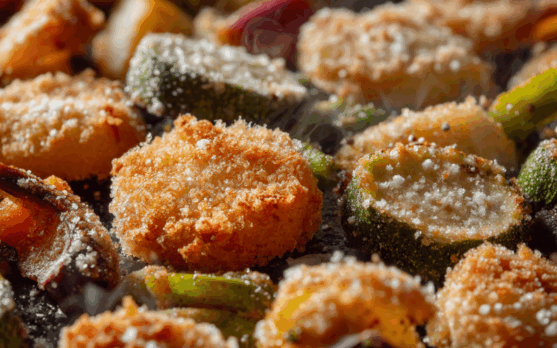Robot Arms & Frozen Meals
When you open a frozen meal packet today, there's a good chance a robot assembled it, not a person. In this episode, we dive into the rise of robotic arms in frozen food production—how they transform portions, ensure hygiene, and revolutionize consistency.

Picture a production line devoted to dumplings, ready meals, or snack kits. A choreographed ballet of mechanical arms that pick, fill, seal—and never miss a beat. That’s the new normal.
These robots—some sturdy, some nimble—have moved far beyond heavy-duty welding. The collaborative models, known as cobots, are increasingly common on factory floors. They work alongside humans, or sometimes instead of them, handling delicate foods with surprising care. One model snatches dumplings and places them gently into trays. Another seals containers, tightening lids with laser precision—keep it clean, keep it sterile.
The power of these robots lies in precision at scale. No sloppiness, no fatigue. They’re programmed once, and then follow the same steps thousands of times, all day, every day. That consistency reduces waste, cuts costs, and ensures you get the same meal experience each time.
In many facilities, a new generation of cobots is built to withstand the cold, sanitize easily, and change jobs in minutes. One food-tech provider shared on LinkedIn that their six-axis cobot can be repurposed in under an hour—move from dumpling assembly to smoothie bowl packaging without shutting down the line.
Wider implications follow. Brands are launching “chef-inspired frozen meals” knowing that cobots can handle specialty packaging—tubes, trays, bags—with equal skill. They can mix ingredients, portion sauces, even place garnish. Some systems are expanding to robotic brushing or glazing—applications once impossible for automation.
These aren’t silent replacements. In many cases, robots assist workers—lifting heavy containers, presenting trays at optimal angles, picking up sealed boxes so humans can insert labels or finalize packaging. The result is higher quality, less physical strain, and new skill sets on the floor.
Cost is no longer prohibitive. Today's mid-range cobots are priced around $20k–$30k, and many come with AI-driven teaching packages—demonstrate a movement, and the robot mimics it. Engineers on forums highlight how quickly new robots can be trained—some within a single shift.
Safety has come a long way: cobots have power and force limits, built-in collision detection, and soft padding. That means they can share floor space with people—even in the cold, wet environment of frozen food plants.
But it's not all smooth. Start-up costs, integration hurdles, regulatory approvals, and sanitation validation all take time. Yet, smart brands weigh this against labor shortages, hygiene demands, and packaging complexity—and decide robots are worth it.
In conversations on LinkedIn groups, factory managers call cobots “productivity multipliers.” One post mentioned a plant reducing labor costs by 30% while increasing output by 20%, all within the first quarter of deployment. That dual gain—faster output, lower cost—is what turns heads in boardrooms and factory floors alike.
Manufacturers like Universal Robots and ABB are delivering more food-safe arms, designed for washdown protocols and slippery surfaces. Italian OEMs specialize in stainless steel versions for meat and seafood. The message is clear: from delicate berries to heavy lasagna trays, there's a robotic arm for every need.
This evolution also opens the door to advanced packaging. With robots, brands can test smaller batches with unique trays—think biodegradable films or modular components—without shutting down full lines. Want to try a premium frozen lasagna in an eco tray? The robot can handle it.
Ultimately, robotic arms in food production are about scalability and adaptability. They allow frozen food lines to shift recipes, run limited editions, manage spikes in demand—all with minimal downtime.
Part of the series: COLD LOGIC Series Overview
Explore the full editorial series.
- 01. Eyes on Ice — AI-powered vision is cleaning up the coldest lines in food
- 02. Robot Arms & Frozen Meals — From dumplings to dinner bowls—robots now build your food
- 03. Rewriting the Freeze — Faster. Smarter. Colder. Inside the new freezing race
- 04. Warehouses Without Humans — In cold storage, robots run the show—quietly and efficiently
- 05. The Code in Your Packaging — How data, tags, and smart sensors reinvent traceability
- 06. Digital Twins & Maintenance Minds — When simulations fix problems before they happen
- Bonus episode: Frozen Futures — What Comes Next
Conclusion
Robotic arms have moved from novelty to necessity in frozen food production. They deliver precision, hygiene, and flexibility at scale—all while cultivating safer, less repetitive environments for humans.
Essential Insights
Cobots are revolutionizing frozen meal assembly—consistent, clean, customizable, and cost-effective. They’re not replacements, but enablers of speed and quality.



